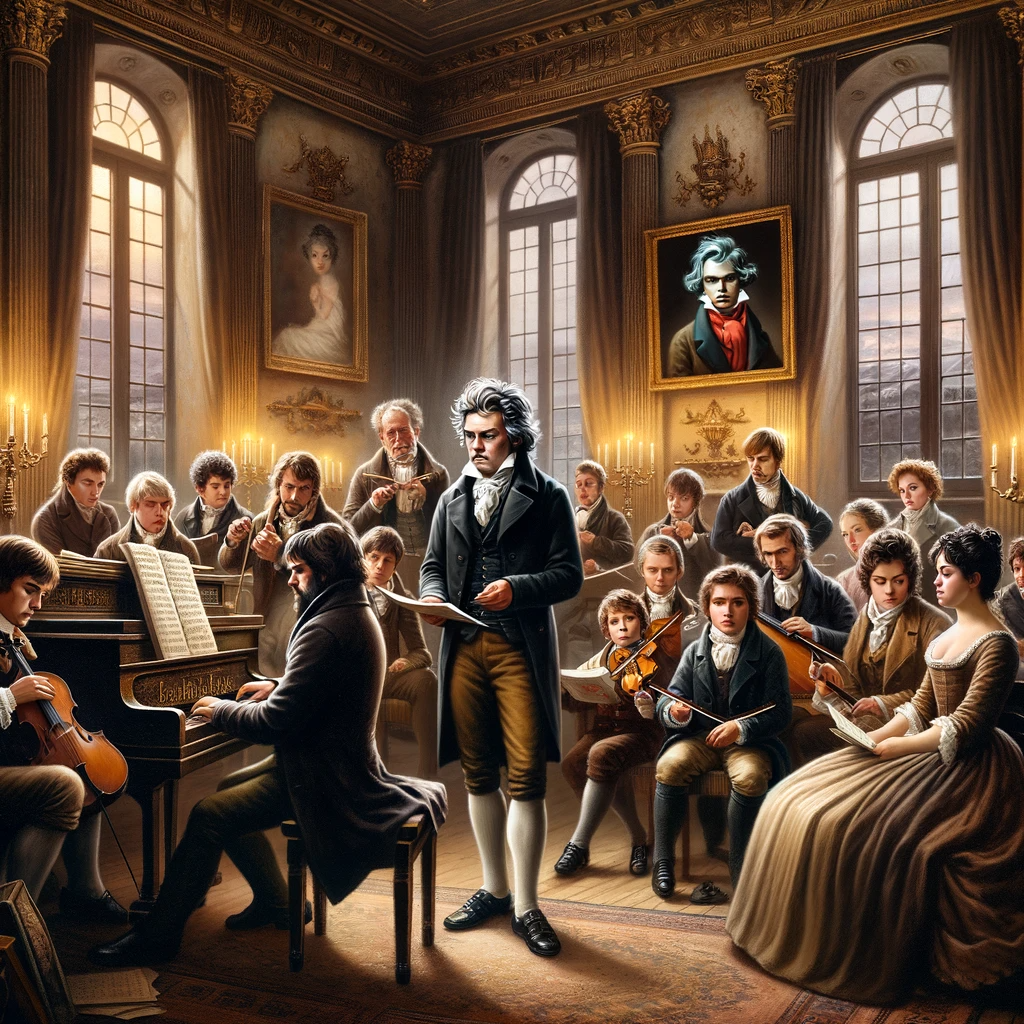
Exploring Beethoven’s Legacy Through His Pupils
Ludwig van Beethoven, a towering figure in the history of Western music, not only left a monumental body of work but also imparted his knowledge and artistic vision to a number of pupils. These pupils, diverse in their backgrounds and musical trajectories, played a significant role in perpetuating Beethoven’s legacy. This article delves into the lives and contributions of these remarkable individuals, exploring how they helped shape the course of classical music.
Check out our resource “Beethoven’s Contemporaries” for more information on this topic.
Beethoven’s Teaching Philosophy
Emphasis on Expression and Technique
Beethoven’s approach to teaching was as intense and passionate as his approach to composition. He emphasized the importance of expression and technical proficiency, encouraging his students to delve deeply into the emotional content of music. His teaching style was demanding yet inspirational, pushing pupils to achieve their highest potential.
Innovation and Individuality
Innovation was at the heart of Beethoven’s teachings. He urged his students to develop their unique voices, thus fostering a generation of composers and performers who were not mere replicas of their teacher but original artists in their own right.
Key Pupils and Their Contributions
Carl Czerny
A Link Between Generations
Carl Czerny, perhaps the most famous of Beethoven’s students, is best known for his piano exercises which are still in use today. Czerny’s work bridged the gap between Beethoven and the Romantic era, influencing composers like Franz Liszt.
Pedagogical Legacy
Czerny’s extensive body of educational materials revolutionized piano teaching, combining Beethoven’s rigorous standards with a more systematic approach.
Ferdinand Ries
A Prolific Composer and Performer
Ferdinand Ries was not only a devoted pupil but also a close friend of Beethoven. He was a prolific composer and performer, whose works, though not widely recognized today, were influential in his time.
Biographical Contributions
Ries’s biographical accounts of Beethoven are invaluable, providing insights into the master’s personal and professional life.
Archduke Rudolph of Austria
A Royal Student
Archduke Rudolph, Beethoven’s patron and pupil, stands out for his royal status. He was a dedicated student and a significant patron of the arts.
Musical Achievements
Though not as prolific as some of Beethoven’s other pupils, Rudolph’s compositions show a deep understanding of Beethoven’s style and an appreciation for the emotional depth of music.
Beethoven’s Influence on Teaching and Performance
The Beethovenian Approach in Music Education
Beethoven’s influence extended beyond his immediate circle of pupils. His emphasis on emotional depth, technical proficiency, and personal expression became guiding principles in music education.
Performance Practices
Beethoven’s pupils carried his legacy into their performances. Their interpretation of Beethoven’s works set standards for future generations, shaping how his music was understood and appreciated.
The Broader Impact of Beethoven’s Pupils
Spreading Beethoven’s Influence
Through compositions, performances, and teaching, Beethoven’s pupils spread his influence across Europe and beyond. They were instrumental in establishing Beethoven’s works as central to the classical music repertoire.
Legacy in Composition and Pedagogy
The compositional and pedagogical contributions of Beethoven’s students influenced the Romantic era and beyond. Their works and teaching methods continued to evolve, reflecting the enduring impact of their mentor.
Expanded Analysis of Beethoven’s Pupils
Johann Nepomuk Hummel
A Versatile Musician
Johann Nepomuk Hummel, a contemporary and rival of Beethoven, also studied briefly with him. Known for his virtuosic piano skills, Hummel was a significant figure in the transition from the Classical to the Romantic era.
Influence on Piano Composition
Hummel’s compositions, especially for the piano, were highly influential. His elegant and lyrical style contrasted with Beethoven’s more forceful approach, yet Hummel’s works reflect the deep impact of Beethoven’s innovative techniques.
Anton Reicha
A Multi-Faceted Composer
Anton Reicha, a friend and sometimes a rival of Beethoven, is best known for his contributions to wind quintet literature. His unique compositional style incorporated complex counterpoint, which was likely influenced by Beethoven’s own innovative methods.
Teaching Impact
Reicha’s impact was most profound in his role as a teacher. He taught at the Paris Conservatoire, where his influence extended to the next generation of composers, including Franz Liszt and Hector Berlioz.
The Lesser-Known Disciples
A Diverse Group
While not all of Beethoven’s pupils achieved fame, each contributed in their way to the musical world. Their diversity in background and style reflects Beethoven’s broad impact across different facets of the music world.
Beethoven’s Pupils as Educators
Continuing the Beethoven Tradition
Many of Beethoven’s pupils became esteemed educators, passing on their master’s principles to a new generation of musicians. This created a lineage of teaching that can be traced through the history of Western music.
Beethoven’s Enduring Influence Through His Pupils
Cultural and Historical Significance
The collective work of Beethoven’s pupils represents a significant cultural and historical lineage. They played a crucial role in the dissemination of Beethoven’s musical ideas, ensuring his enduring relevance in the musical canon.
Innovations and Developments
Each pupil, in their way, contributed to the evolution of musical language. Their innovations, whether in composition, performance, or pedagogy, reflect the profound influence of Beethoven’s artistry.
The Legacy in Modern Times
Beethoven’s Methods in Contemporary Education
The teaching methods and philosophies of Beethoven, as passed down through his pupils, continue to influence contemporary music education. Many modern teaching techniques can trace their roots back to Beethoven’s emphasis on expression, technical skill, and emotional depth.
Modern Performances of Beethoven’s Works
The performance practices established by Beethoven and his pupils still inform today’s interpretations of his works. Musicians continue to grapple with the balance between historical accuracy and contemporary sensibilities, a challenge rooted in Beethoven’s own revolutionary approach to music-making.
Conclusion
The world of Beethoven’s pupils is a testament to the far-reaching influence of one of the greatest composers in Western music history. Through their compositions, teachings, and performances, these individuals not only preserved Beethoven’s legacy but also contributed to the rich tapestry of classical music. Their diverse paths reflect the multifaceted nature of Beethoven’s own genius, a genius that continues to inspire and challenge musicians and listeners alike.